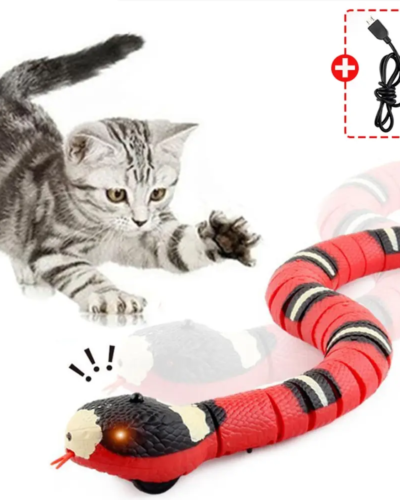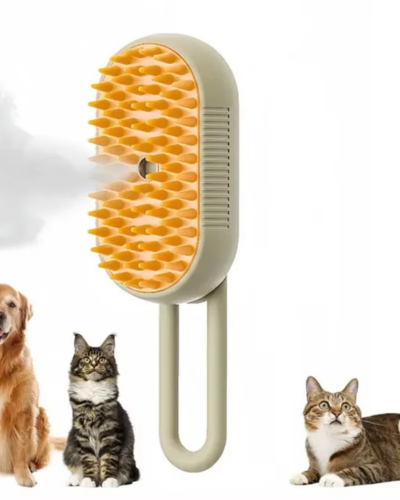Subtotal: 23.97 £
Free delivery for orders over £45

Tips for Training Your Cat to Use a Scratching Post
Table of Contents
Cats are delightful companions, but sometimes their natural behaviour can be challenging. By understanding cats’ innate scratching needs, you can guide them effectively using a suitable cat scratching post. This article delves into selecting the right scratching post and provides proven training techniques to improve your cat’s behaviour. Discover how positive reinforcement can help and avoid common mistakes with tips crafted for both novice and experienced cat owners.
Understanding Your Cat’s Scratching Needs
Cats have an inherent need to scratch, which is intertwined with their instincts. Understanding this behaviour is crucial when training your feline to use a scratching post. Scratching serves several purposes for cats. It helps them sharpen their claws, mark their territory, and stretch their muscles. By recognising these needs, you can better address them.
Cats may scratch when they are happy or relaxed or to relieve stress. It’s a natural behaviour, and stopping it entirely is neither possible nor advisable. Instead, providing directed ways to scratch is beneficial. A scratching post becomes an essential tool, allowing you to protect your furniture!
Your choice of scratching post can significantly influence your cat’s willingness to use it. Consider materials like sisal rope, which mimics textures they would find in nature. Additionally, the scratching post should be sturdy. Cats enjoy stretching out their entire bodies when scratching, so height is important. The post should be tall enough to allow them to extend fully.
Placement is also a consideration. Cats often scratch in prominent areas to signal their presence. Positioning the post near places your cat likes to rest or near the furniture they currently scratch can increase the likelihood of it being used. Experiment with different locations to see which your cat prefers.
By understanding these fundamentals of your cat’s scratching behaviour, you’ll be better equipped to guide your cat to use their scratching post time and time again.
Choosing the Right Scratching Post
Choosing the right scratching post can significantly impact your cat’s behaviour and comfort in your home. When selecting a post, consider the material first. Sisal rope is a preferred option as it’s durable and provides a satisfying texture for cats to shred. Alternatively, some cats may prefer corrugated cardboard, which can mimic the feel of natural wood they might encounter outside.
Next, examine the structure and height. A post should be tall enough for your cat to fully stretch while standing on its hind legs. This allows them to fulfil their natural stretching instinct, which keeps their muscles healthy. Posts measuring at least 30 inches in height often provide adequate room for a full stretch.
Stability is paramount; a wobbly post will be unattractive and unsafe. Consider a post with a broad, heavy base to prevent tipping over. Wall-mounted options or multi-surface posts are excellent for those active climbers in your household.
Location is key. Place the scratching post in a spot your cat frequents, such as near bedding or play areas. Curiosity will naturally draw them to explore the post. Sometimes, positioning a new post near areas they already scratch, like the arm of a sofa, can redirect their behaviour effectively.
Design is also important, not just for aesthetics but for engaging your pet. Diverse textures or ones that match existing furniture might attract your cat more, making the transition smoother. Finally, some cats appreciate vertical as well as horizontal surfaces. Offering a flat scratching board alongside the post gives them variety, addressing different scratching preferences.
Encouraging Your Cat to Use a Scratching Post
Encouraging your cat to use a scratching post can be a rewarding part of their training. Cats naturally have a desire to scratch, and providing them with an alternative to your furniture is key. Place the scratching post in an area where your cat likes to spend time. It should be stable so it doesn’t topple over as your cat scratches.
Strategic Placement
Cats are often drawn to high-traffic areas, so place the scratching post in a location where your cat will notice it. Positioning it near their sleeping area helps since many cats enjoy a good stretch and scratch when they wake up.
Make Use of Scent: Cats are attracted to familiar scents. Rubbing some catnip on the scratching post can increase its appeal. Alternatively, play with your cat near the post using their favourite toy to create a positive association.
Model the Behaviour
Demonstrate scratching on the post using your fingers. This behaviour can pique your cat’s curiosity, potentially encouraging them to do the same. Use encouraging words and, if possible, address your cat by their name to get their attention.
Reward with Treats: Cats respond well to positive reinforcement. Anytime you see your cat using the scratching post, offer them a treat or affection. This forms a positive connection in their mind with the action of scratching on the post.
Remember, patience is vital. Every cat is unique, and some may take more time to adapt to new habits. By consistently using these methods, you encourage your feline friend to embrace their designated scratching area.
Training Techniques for Better Cat Behaviour
Training your cat to use a scratching post involves consistent methods and patient guidance. As felines are naturally inclined to scratch, it’s essential to redirect this behaviour effectively. Introduce the scratching post by placing it near areas where your cat commonly scratches, such as furniture or door frames. Allow the cat to investigate the post at their own pace.
Use positive reinforcement techniques, such as offering treats or gentle praise when your cat shows interest in or uses the scratching post. This encourages the cat to associate the post with rewards, reinforcing desired behaviour. Engage in interactive play sessions around the scratching post, using toys to attract and retain your cat’s attention towards the desired location.
Utilise engaging textures and materials on the scratching post that appeal to your cat’s senses. This enhances their experience and increases the likelihood of repeated use. If your cat is hesitant, try gently guiding their paws onto the post to demonstrate its purpose, but avoid forcing them, as this may cause aversion.
Remember, each cat is unique, and training requires patience. Never resort to punitive measures, as they can damage the trust between you and your pet. With perseverance, encouragement, and a little creativity, training your cat to adopt positive scratching habits becomes a rewarding journey.
Common Mistakes When Training Cats
Avoid Overcomplicating Instructions: Cats respond best to simple and clear instructions. When training your cat to use a scratching post, keep your guidance straightforward and consistent. Avoid overwhelming your pet with multiple commands at once as it may confuse them.
Not Providing Enough Alternative Options: Having just one scratching post might not suffice, especially if your cat doesn’t find it appealing. Offer a variety of scratching posts with different textures and sizes throughout your home to cater to your cat’s diverse scratching preferences.
Inconsistent Training Methods: Consistency is key when training any animal. If everyone in the household participates in the training, ensure they’re all using the same methods and commands. Consistent messaging helps reinforce learning.
Ignoring Your Cat’s Preferences: Every cat has its own likes and dislikes. Some may prefer a vertical post, while others enjoy a horizontal one. Observe your cat’s natural behaviour to choose the right kind of post and location that they are inclined to use.
Punishing Instead of Encouraging: It’s vital to avoid punishing your cat for scratching furniture. Instead, redirect them to their designated scratching post. Reward positive behaviour with treats or affection to establish the desired habit.
Failing to Maintain the Scratching Post: Ensure that the scratching post remains in good shape and stable. Regularly check and replace worn material. A sturdy and enticing post encourages frequent use.
The Importance of Positive Reinforcement
Positive reinforcement is a powerful tool in training cats to use a scratching post. By rewarding your cat for desired behaviours, you encourage these actions and reduce undesirable ones. When your cat uses the scratching post, offer immediate rewards such as treats, praise, or attention. This helps your feline associate the scratching post with positive experiences, increasing the likelihood of repeated behaviour.
Consistency is key when applying positive reinforcement. Ensure that every time your cat uses the scratching post, they receive positive feedback. This consistency not only helps in understanding but also in building trust and a routine. It’s important that all household members participate in this training method for unified messaging.
Identify your cat’s preferences, such as specific treats or toys. This can increase motivation significantly. Engage in interactive play near the scratching post, using a toy to guide your cat’s attention to the post. As your cat claws the post, reward them immediately.
Contrary to some beliefs, negative reinforcement or punishment should be avoided, as it can lead to stress or anxiety in cats. Positive reinforcement focuses on rewarding good behaviour, making the training process pleasant for both the trainer and the cat.
Advanced Behaviour Tips for Experienced Cat Owners
Understanding advanced feline behaviour can help you in creating a more harmonious environment for you and your pet. When training your cat to use a scratching post, it’s important to be aware of the nuances in cat behaviour, as seasoned cat owners will likely understand. One effective approach is to recognise behavioural triggers that your cat might exhibit before engaging in strong scratching actions. This understanding provides an avenue to guide your cat to a designated scratching post effectively.
Provide Stimulating Environment:
One advanced method for experienced cat owners is to ensure the environment is enriched and stimulating. Cats enjoy variety and complexity, so providing multiple scratching posts, each offering different textures and heights, can keep them engaged. Rotate these posts every few weeks to eliminate any potential boredom.
Utilise Scent and Pheromone Strategies:
Another expert tip involves using scent and pheromone strategies. Cats rely heavily on their sense of smell. Rubbing a bit of catnip on the scratching post can encourage them to use it more frequently. Additionally, using synthetic feline pheromones can make the scratching post more appealing to your cat.
Observe and Adapt:
Observing changes in your cat’s behaviour is crucial. If your cat appears uninterested in the scratching post, consider its placement. Cats often prefer places where they spend most of their time, such as near windows or sleeping areas. Adjust accordingly and always keep a watchful eye on how your cat interacts with its environment.
-
Dry Fast
9.99 £Original price was: 9.99 £.7.99 £Current price is: 7.99 £.
Contact Us
- +44 07391626201
- info@promotepet.com
- 16, Cromwell Close - Oxford - UK
COPYRIGHT © PROMOTE PET. ALL RIGHTS RESERVED. © 2024 Chofard Enterprise Ltd. Chofard Enterprise is a company registered in England and Wales with a company number 13073779 VAT number GB 370644889. 16, Cromwell Close, Oxford OX30RW, United Kingdom – trading as Promote Pet Online Shop.

 Smart Sensing Interactive Snake Cat Toy
Smart Sensing Interactive Snake Cat Toy  Dry Fast
Dry Fast 








